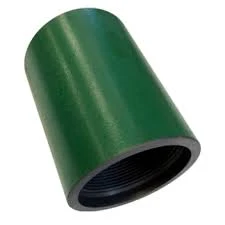- Afrikaans
- Albanian
- Amharic
- Arabic
- Armenian
- Azerbaijani
- Basque
- Belarusian
- Bengali
- Bosnian
- Bulgarian
- Catalan
- Cebuano
- Corsican
- Croatian
- Czech
- Danish
- Dutch
- English
- Esperanto
- Estonian
- Finnish
- French
- Frisian
- Galician
- Georgian
- German
- Greek
- Gujarati
- Haitian Creole
- hausa
- hawaiian
- Hebrew
- Hindi
- Miao
- Hungarian
- Icelandic
- igbo
- Indonesian
- irish
- Italian
- Japanese
- Javanese
- Kannada
- kazakh
- Khmer
- Rwandese
- Korean
- Kurdish
- Kyrgyz
- Lao
- Latin
- Latvian
- Lithuanian
- Luxembourgish
- Macedonian
- Malgashi
- Malay
- Malayalam
- Maltese
- Maori
- Marathi
- Mongolian
- Myanmar
- Nepali
- Norwegian
- Norwegian
- Occitan
- Pashto
- Persian
- Polish
- Portuguese
- Punjabi
- Romanian
- Russian
- Samoan
- Scottish Gaelic
- Serbian
- Sesotho
- Shona
- Sindhi
- Sinhala
- Slovak
- Slovenian
- Somali
- Spanish
- Sundanese
- Swahili
- Swedish
- Tagalog
- Tajik
- Tamil
- Tatar
- Telugu
- Thai
- Turkish
- Turkmen
- Ukrainian
- Urdu
- Uighur
- Uzbek
- Vietnamese
- Welsh
- Bantu
- Yiddish
- Yoruba
- Zulu
coupling tube fitting
Understanding Coupling Tube Fittings The Essential Component in Fluid Systems
Coupling tube fittings are integral components in many fluid and gas systems. They are designed to securely connect two pipes or tubes, ensuring a leak-free, reliable, and efficient flow of fluids. These fittings are widely used across various industries, including automotive, aerospace, plumbing, and oil and gas, providing versatility and reliability in numerous applications.
The primary purpose of coupling tube fittings is to join two tube sections, allowing for easy assembly and disassembly without compromising the integrity of the system. They typically come in various shapes and sizes, accommodating different tube diameters and materials. Common materials for these fittings include stainless steel, brass, and plastic, each offering unique advantages in different environments. For instance, stainless steel fittings are known for their strength and corrosion resistance, making them ideal for harsh industrial settings, while plastic fittings may be preferred in low-pressure applications involving chemicals.
Installation of coupling tube fittings is generally straightforward, making them user-friendly. Many modern fittings utilize a compression mechanism, where a nut and ferrule compress a sleeve around the tube to create a tight seal. This design eliminates the need for welding or threading, streamlining the installation process. Moreover, the ability to easily disconnect and reconnect tubing makes maintenance and modifications to systems more feasible, reducing downtime and enhancing efficiency.
coupling tube fitting

When selecting coupling tube fittings, it is crucial to consider several factors. The compatibility of the materials with the fluid being transported, the operating pressure, and the temperature range are vital parameters to ensure optimal performance. Additionally, understanding the specific requirements of the application, such as vibration resistance or size restrictions, can help in choosing the right fitting.
In recent years, advancements in technology have led to the development of innovative coupling tube fittings that offer enhanced performance features. For example, some fittings now include integrated sensors that monitor fluid flow and pressure, providing real-time data that can be critical for maintaining system efficiency and safety.
Overall, coupling tube fittings are essential elements in fluid transport infrastructure. Their reliability, ease of use, and versatility make them indispensable in ensuring the effective operation of various systems. As industries continue to evolve, these fittings will undoubtedly adapt, incorporating new technologies and materials to meet the changing demands of modern applications.
-
Tubing Pup Joints: Essential Components for Oil and Gas OperationsNewsJul.10,2025
-
Pup Joints: Essential Components for Reliable Drilling OperationsNewsJul.10,2025
-
Pipe Couplings: Connecting Your World EfficientlyNewsJul.10,2025
-
Mastering Oilfield Operations with Quality Tubing and CasingNewsJul.10,2025
-
High-Quality Casing Couplings for Every NeedNewsJul.10,2025
-
Boost Your Drilling Efficiency with Premium Crossover Tools & Seating NipplesNewsJul.10,2025







